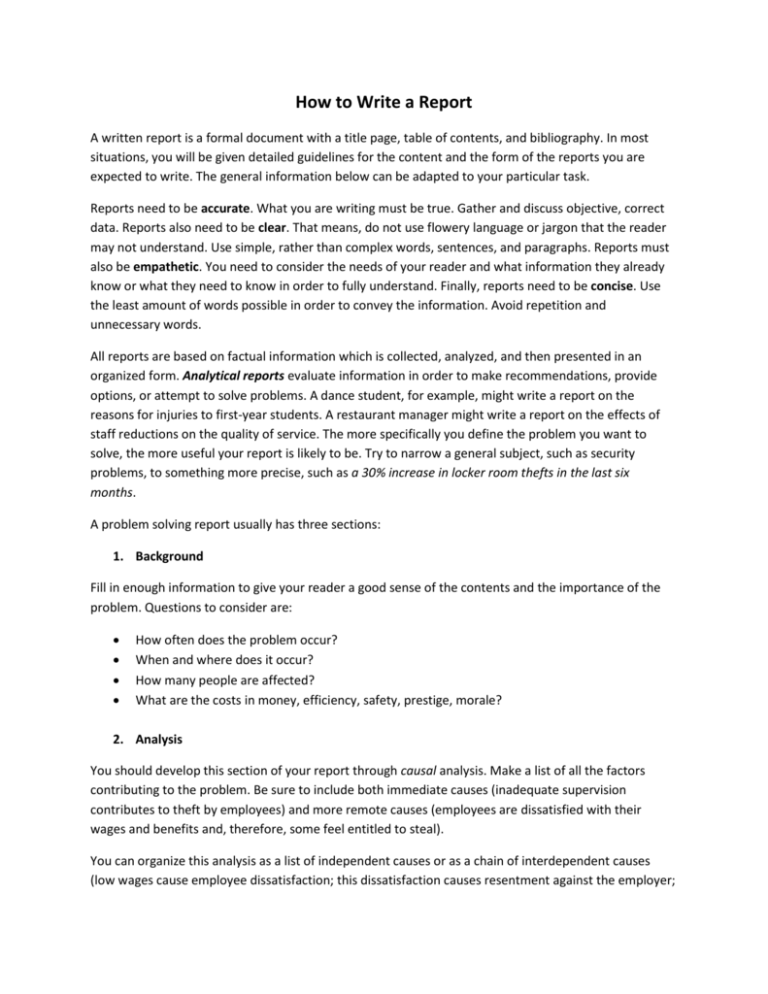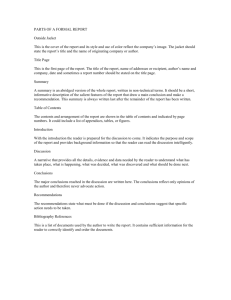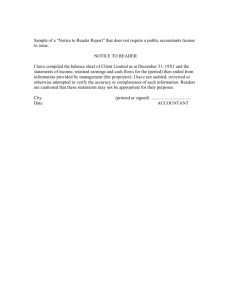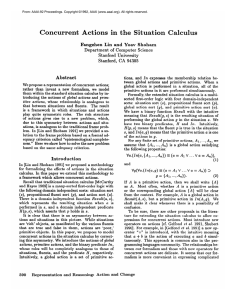Reports
advertisement

How to Write a Report A written report is a formal document with a title page, table of contents, and bibliography. In most situations, you will be given detailed guidelines for the content and the form of the reports you are expected to write. The general information below can be adapted to your particular task. Reports need to be accurate. What you are writing must be true. Gather and discuss objective, correct data. Reports also need to be clear. That means, do not use flowery language or jargon that the reader may not understand. Use simple, rather than complex words, sentences, and paragraphs. Reports must also be empathetic. You need to consider the needs of your reader and what information they already know or what they need to know in order to fully understand. Finally, reports need to be concise. Use the least amount of words possible in order to convey the information. Avoid repetition and unnecessary words. All reports are based on factual information which is collected, analyzed, and then presented in an organized form. Analytical reports evaluate information in order to make recommendations, provide options, or attempt to solve problems. A dance student, for example, might write a report on the reasons for injuries to first-year students. A restaurant manager might write a report on the effects of staff reductions on the quality of service. The more specifically you define the problem you want to solve, the more useful your report is likely to be. Try to narrow a general subject, such as security problems, to something more precise, such as a 30% increase in locker room thefts in the last six months. A problem solving report usually has three sections: 1. Background Fill in enough information to give your reader a good sense of the contents and the importance of the problem. Questions to consider are: How often does the problem occur? When and where does it occur? How many people are affected? What are the costs in money, efficiency, safety, prestige, morale? 2. Analysis You should develop this section of your report through causal analysis. Make a list of all the factors contributing to the problem. Be sure to include both immediate causes (inadequate supervision contributes to theft by employees) and more remote causes (employees are dissatisfied with their wages and benefits and, therefore, some feel entitled to steal). You can organize this analysis as a list of independent causes or as a chain of interdependent causes (low wages cause employee dissatisfaction; this dissatisfaction causes resentment against the employer; this resentment causes employees to steal). Depending on the complexity of the problem you are analyzing, you may want to combine both methods of developing a causal analysis. Connect your analysis directly with the information in the background section so that your reader can see how your analysis explains the causes of the problem. 3. Recommendations and Implementation Suggest solutions to the problem you have analyzed. Your recommendations should follow logically from the analysis section. If you are suggesting a number of possible solutions, indicate which one is best and explain why. If required, describe how the recommendations could be implemented.






